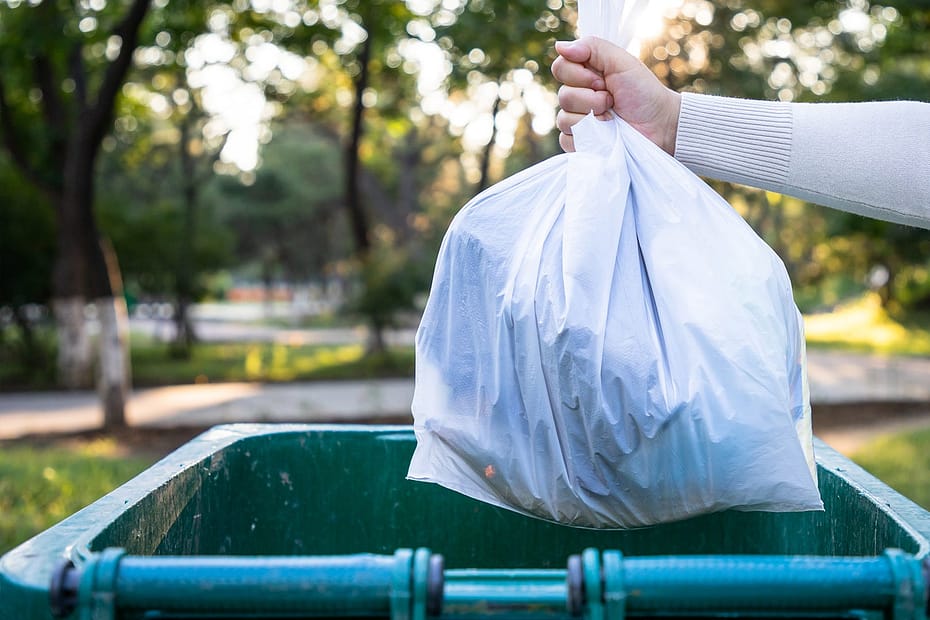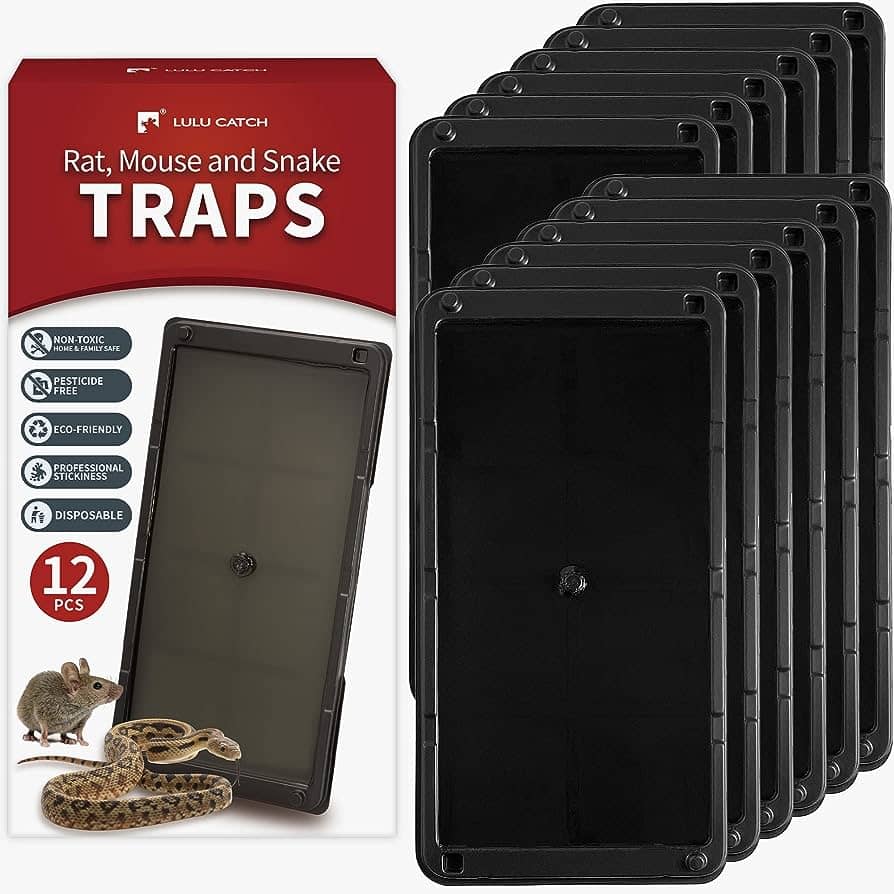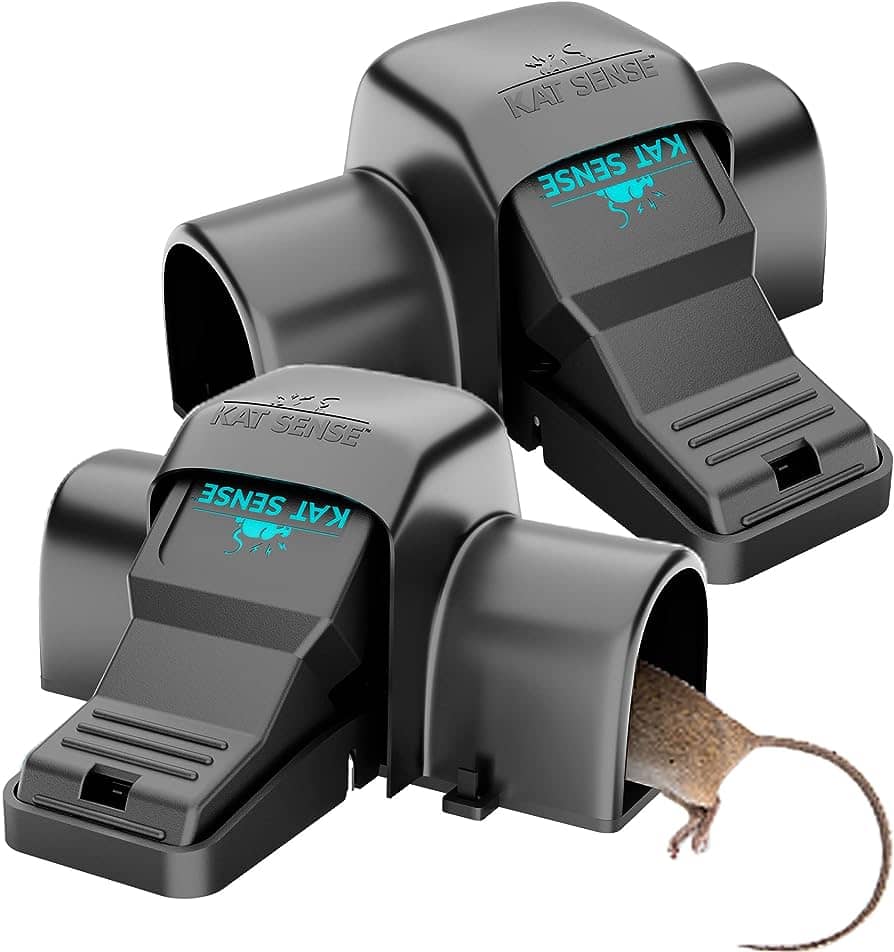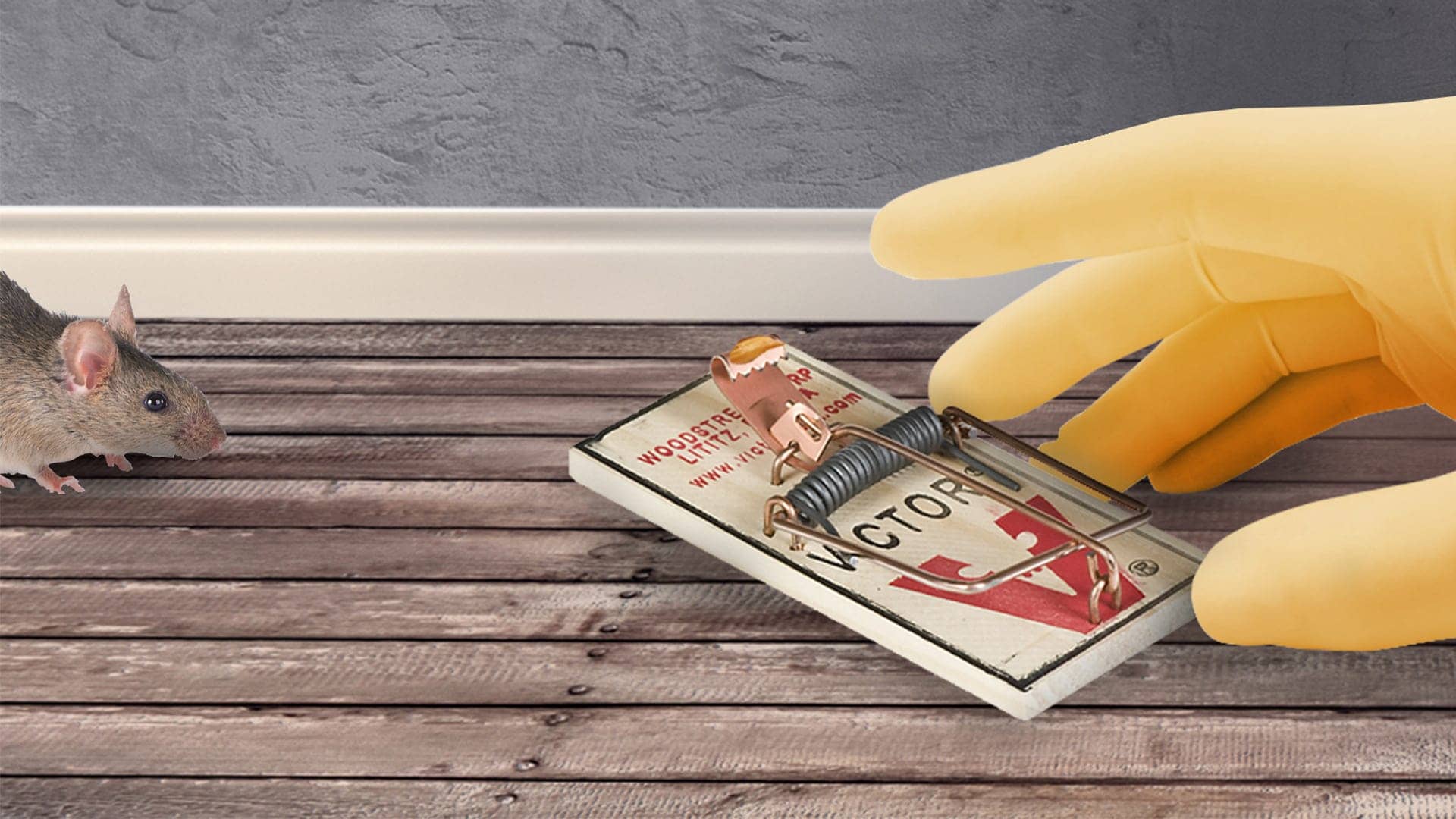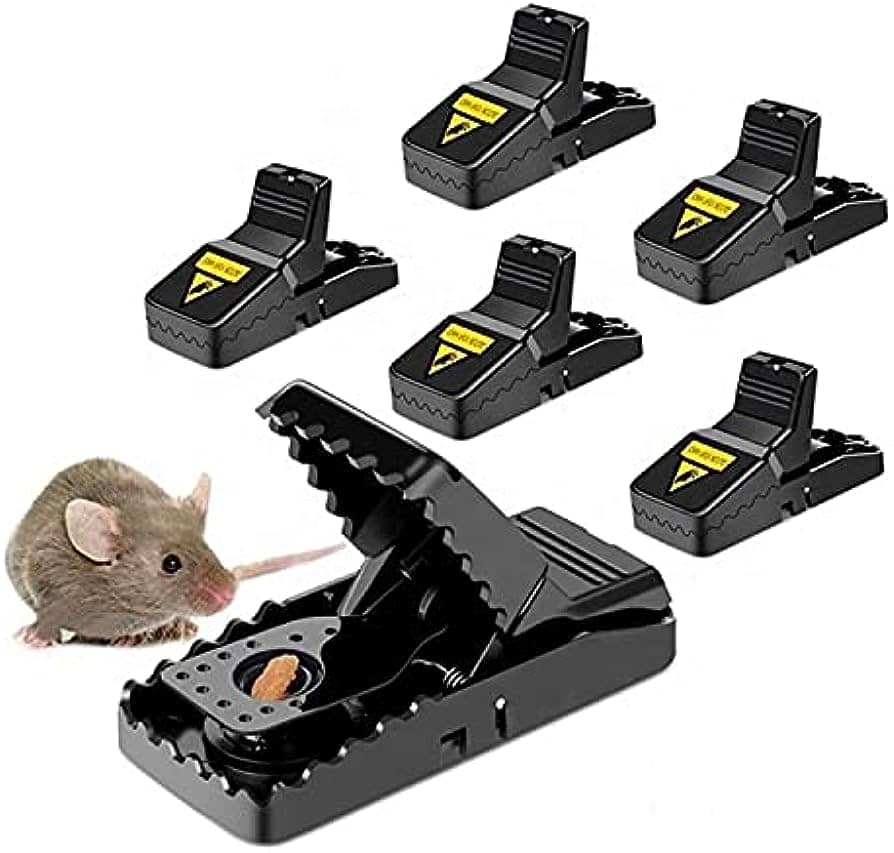To properly dispose of trapped mice, use snap traps and place them in a secure, ventilated plastic bag before throwing them in an outdoor trash can. Trapping and removing mice from your home is essential for maintaining a hygienic and safe living environment.
However, it is equally important to know how to properly dispose of these trapped pests. Improper disposal can lead to the spread of diseases and attract other pests. To ensure a thorough removal process, it is recommended to use snap traps.
Once a mouse is caught, carefully put the trap into a secure, ventilated plastic bag to avoid direct contact. After securing the bag, place it in an outdoor trash can. By following these steps, you can effectively handle the disposal of trapped mice without causing any further issues.
Understanding The Importance Of Proper Mouse Disposal
Proper mouse disposal is essential for maintaining a clean and healthy environment. Learn how to safely and effectively dispose of trapped mice to prevent the spread of diseases and keep your surroundings pest-free.
Proper disposal of trapped mice is not just about getting rid of the problem; it is also crucial for maintaining hygiene, ensuring good health, preventing the spread of diseases, and minimizing the environmental impact. Here’s why it is essential to handle mouse carcasses correctly:
Why Proper Disposal Is Necessary For Hygiene And Health:
- Preventing bacterial contamination: Mouse corpses can carry harmful bacteria, such as salmonella, leptospirosis, and hantavirus. Proper disposal helps avoid the risk of spreading these pathogens.
- Reducing foul odors: Dead mice can emit a strong, unpleasant smell, which lingers in the surrounding area. Proper disposal ensures the elimination of these odor-causing carcasses.
- Minimizing allergic reactions: Mouse dander, urine, and droppings can trigger allergies, potentially causing respiratory issues. By properly disposing of the corpses, you can lower the risk of allergic reactions.
The Dangers Of Leaving Mouse Corpses Untreated:
- Increased pest infestation: Leaving mouse cadavers untouched can attract other pests, such as flies, maggots, and opportunistic rodents, creating a larger infestation problem.
- Disease transmission: Neglecting to dispose of mouse carcasses properly may contribute to the spread of diseases, as other animals, including pets, can come into contact with these remains.
- Unsanitary conditions: Untreated mouse corpses can contaminate surfaces, food, and water sources, adversely affecting cleanliness and sanitation levels.
The Environmental Impact Of Incorrect Disposal Methods:
- Soil and water pollution: Mishandling mouse carcasses can contaminate nearby soil and water bodies, potentially harming plant and aquatic life.
- Threat to other species: Predators, scavengers, or roaming pets can be exposed to harmful substances when coming into contact with improperly disposed of mouse remains.
- Disruption of ecosystems: The improper disposal of mouse carcasses may disturb the natural food chain and ecosystem balance, leading to unintended consequences.
Proper mouse disposal is crucial not only to safeguard your health and hygiene but also to protect the environment. By following appropriate disposal methods, you can minimize the risks associated with mice infestations and maintain a clean and safe living environment.
Step-By-Step Guide To Dispose Of Trapped Mice Safely
Dispose of trapped mice safely with this step-by-step guide. Learn how to handle and release them without causing harm while keeping your home rodent-free. Gain peace of mind knowing you’re following proper and humane methods of removal.
When faced with the task of disposing of trapped mice, it is essential to follow the right steps to ensure both your safety and the ethical treatment of these creatures. In this guide, we will walk you through the proper methods of disposing of trapped mice, providing step-by-step instructions and important safety precautions to consider.
By following these guidelines, you can handle this situation responsibly and efficiently.
Recommended Safety Precautions Before Handling Trapped Mice
To begin with, it is crucial to prioritize your safety before embarking on the disposal process. By taking the following precautions, you can minimize the risk of any potential harm:
- Wear protective gloves: Ensure you have a pair of sturdy disposable gloves on hand to safeguard yourself from direct contact with the trapped mice.
- Use a face mask: As you handle the mice or their trap, it’s wise to wear a mask to prevent inhaling any potential allergens or diseases.
- Maintain a sterile environment: Prepare a clean and designated area for handling and disposing of the mice. This helps prevent the spread of bacteria or parasites.
- Avoid touching your face: Refrain from touching your face during the entire process to avoid transferring any contaminants.
- Keep children and pets away: It’s crucial to create a controlled environment by keeping curious children and pets away from the disposal area.
- Wash your hands thoroughly: After completing the disposal process, thoroughly wash your hands with warm water and antibacterial soap to eliminate any potential bacteria.
Choosing The Right Disposal Method For Your Situation
Before proceeding, it’s important to consider the appropriate disposal method based on your specific circumstances. Here are a few common methods you can choose from:
- Natural outdoor burial: This method involves digging a hole in a suitable outdoor area away from any sources of food or water. It allows for the natural decomposition of the mice and is environmentally-friendly.
- Trash bag disposal: Placing the trapped mice and their trap in a sturdy trash bag, securely tied, can be an effective method. However, ensure that the bag is disposed of properly to prevent any accidental release of the mice.
- Freezing: By placing the trapped mice and their trap in a sealable bag and freezing them, you can effectively euthanize the mice. This method is convenient but should be followed by proper disposal in the trash.
Step-By-Step Instructions For Each Disposal Method
Natural Outdoor Burial:
- Dig a hole: Find a suitable outdoor location away from any water sources or areas frequented by humans or animals. Dig a hole that is at least one foot deep.
- Place the mice in the hole: Gently remove the trapped mice and their trap from the designated area and place them into the hole.
- Cover the hole: Fill the hole with soil, ensuring it is securely covered to prevent any animals from digging the mice out.
- Cleanse your hands: Thoroughly wash your hands with warm water and antibacterial soap after completing the burial process.
Trash Bag Disposal:
- Prepare a trash bag: Get a sturdy trash bag that is large enough to accommodate the mice and their trap.
- Remove the mice from the trap: Carefully remove the mice and their trap, ensuring none escape in the process.
- Place everything in the bag: Put the mice and their trap into the trash bag, making sure it is securely sealed to prevent any leakage or accidental release.
- Dispose of the bag: Place the sealed bag in your regular trash container or outdoor garbage bin, following your local waste disposal regulations.
Freezing:
- Get a sealable bag: Select a sealable plastic bag that is large enough to accommodate the mice and their trap.
- Transfer the mice: Remove the trapped mice and their trap, placing them into the plastic bag.
- Seal the bag: Ensure the bag is tightly sealed to prevent any air from entering or escaping.
- Place in the freezer: Put the sealed bag in the freezer, leaving it for at least 24 hours to effectively euthanize the mice.
- Dispose of the bag: After the freezing period, dispose of the bag, following your local waste management guidelines.
By following these step-by-step instructions and adhering to the recommended safety precautions, you can properly and safely dispose of trapped mice. Always remember to consider the ethical treatment of these creatures and act responsibly throughout the entire process.
Disposal Methods For Trapped Mice
Properly disposing of trapped mice is crucial for maintaining hygiene. Follow these methods to ensure safe and effective removal of trapped mice.
Method 1: Using Live Traps And Releasing Mice Outdoors
Using live traps is a humane method of trapping mice, allowing you to safely release them back into the wild without harm. Here’s how to effectively set up and bait live traps:
- Choose the right trap: Opt for a live trap that is sturdy and secure, ensuring the mice cannot escape once captured.
- Place the trap strategically: Position the trap along the mice’s regular paths, near walls or in areas where you’ve noticed their activity.
- Optimize bait selection: Use enticing bait like peanut butter or small bits of chocolate to lure the mice into the trap.
- Ensure proper trap placement: Set the trap against a wall, with the entrance facing the wall, as mice tend to travel along edges.
- Check traps regularly: Regularly inspect the traps to avoid leaving mice trapped for long periods, minimizing stress and ensuring their quick release.
When it comes to releasing the mice outdoors, follow these considerations and safe handling techniques:
- Release at a safe distance: Take the trapped mouse at least 100 yards away from your property, ensuring it won’t return.
- Choose a suitable environment: Release the mouse in a safe, natural habitat such as a wooded area or near water sources, where it can find shelter and resources.
- Avoid releasing near other homes: Prevent conflicts with other homeowners by releasing the mouse away from residential areas.
- Handle with care: When handling the trap, wear gloves to protect yourself from potential bites or scratches, and delicately release the mouse without causing harm.
Method 2: Humanely Euthanizing Trapped Mice
While releasing mice may not always be feasible or preferred, humanely euthanizing trapped mice is an alternative. Here’s what you need to know:
Understanding the necessity of euthanasia:
- Minimizing suffering: Euthanasia is necessary when trapped mice are injured, severely ill, or unable to survive in the wild. It prevents prolonged suffering.
- Preventing population growth: Euthanizing mice allows you to control their population and prevent infestations in your home.
Recommended euthanasia methods and proper execution:
- CO2 chamber: Place the live trap containing the mouse in a sealed container connected to a source of carbon dioxide (CO2). The CO2 will humanely euthanize the mouse by displacing the oxygen in the container.
- Cervical dislocation: This method should only be performed by trained individuals. It involves a quick, manual separation of the mouse’s head from its body, ensuring an immediate and painless death.
- Consult local regulations: Before euthanizing mice, check local regulations to ensure you are following legal requirements for humane disposal.
Method 3: Calling Professional Pest Control Services
While handling trapped mice on your own is an option, there may be instances when professional assistance is necessary. Consider the following:
When to consider professional assistance:
- Large infestations: If you are dealing with a large number of trapped mice or suspect a significant infestation in your home, it may be best to seek expert help.
- Unsuccessful DIY attempts: If your DIY trapping methods have not been successful, it’s time to bring in professionals who have the expertise and tools to effectively resolve the issue.
- Safety concerns: Some individuals may have safety concerns when it comes to handling mice or performing euthanasia. In such cases, professional pest control can offer peace of mind.
Pros and cons of hiring experts for disposal:
- Pros:
- Expert knowledge and experience in handling mice and infestations.
- Access to professional-grade trapping and disposal equipment.
- Effective and efficient eradication of mice infestations.
- Cons:
- Associated service costs and fees.
- May not align with personal preferences for live trapping or euthanasia.
Considering professional pest control services can provide an optimal solution when dealing with trapped mice, ensuring thorough and effective eradication while minimizing personal involvement.
Safety Precautions And Hygiene Practices
Properly disposing of trapped mice is essential for safety and hygiene. Follow these guidelines to ensure you handle this task effectively and responsibly.
Mice infestations can be a nuisance, but it’s important to handle the situation with care. Implementing safety precautions and practicing good hygiene is essential to ensure your health and wellbeing. When dealing with trapped mice, keep the following guidelines in mind:
Wearing Appropriate Personal Protective Equipment (Ppe):
- Gloves: Always wear gloves when handling traps and mice to prevent direct contact and the potential spread of diseases.
- Mask: Consider wearing a mask to protect yourself from inhaling any particles or allergens that may be released during the disposal process.
- Protective clothing: It’s advisable to wear clothing that covers your skin to minimize the risk of bites or scratches from trapped mice.
Proper Handwashing Techniques After Handling Mice And Traps:
- Use warm water and soap: Thoroughly wash your hands with warm water and soap for at least 20 seconds. Pay close attention to the areas between your fingers and under your nails where dirt and germs may accumulate.
- Hand sanitizer: If soap and water are not available, use an alcohol-based hand sanitizer with at least 60% alcohol content to sanitize your hands effectively. Rub the sanitizer all over your hands until they are dry.
Disinfection Guidelines For The Disposal Area:
- Prepare a disinfectant: Dilute a suitable disinfectant according to the manufacturer’s instructions or use a mixture of 1-part bleach to 10 parts water.
- Clean the area: Prior to disposal, clean the area where the mice and traps were located. Use paper towels or disposable cloths to wipe down affected surfaces, removing any visible remnants and droppings.
- Disposal of traps and deceased mice: Place both the traps and the deceased mice in a sealed plastic bag. Double-bagging is recommended to prevent any potential leakage. Dispose of the bag in an appropriate waste receptacle, following local regulations.
- Disinfect the area: After removing the traps and mice, disinfect the disposal area thoroughly. Apply the disinfectant solution to all surfaces that may have come into contact with the trapped mice, including floors, countertops, and nearby objects. Allow the disinfectant to remain on the surfaces for the recommended amount of time before wiping off.
- Proper waste management: Ensure that the waste containing trapped mice and associated materials is disposed of in accordance with local regulations. Take into consideration recycling, biohazard, or general waste disposal guidelines, as applicable.
By adhering to these safety precautions and hygiene practices, you can minimize the risks associated with disposing of trapped mice. Remember, it is always better to prioritize your safety and take necessary precautions when handling such situations to maintain a healthy and clean environment.
Proper Disposal Of Trapping Tools And Waste
Properly dispose of trapped mice and waste by following these guidelines for effective and safe removal. Keep in mind the importance of proper disposal to maintain cleanliness and prevent any health hazards.
How To Clean And Sanitize Trapping Devices Effectively:
- Proper cleaning and sanitizing of trapping devices are essential to maintain effective pest control and prevent the spread of diseases. Follow these tips to clean and sanitize your trapping tools effectively:
- Start by wearing gloves to protect yourself from coming into direct contact with any potential contaminants.
- Remove any visible debris or dead mice from the traps using disposable paper towels or gloves. Ensure that you handle the traps with care to avoid any injuries.
- Wash the trapping devices with warm soapy water thoroughly. Scrub the surfaces to remove any dirt, grease, or blood stains.
- Rinse the traps under running water to ensure that all the soap residue is removed.
- Use a disinfectant solution to sanitize the trapping devices. You can choose between using a commercial disinfectant or a homemade mixture of water and bleach (1 part bleach to 10 parts water).
- Immerse the traps in the disinfectant solution for at least 10 minutes to allow the solution to kill any remaining bacteria or viruses.
- After disinfecting, rinse the traps under running water again to remove any traces of the disinfectant solution.
- Allow the traps to air dry completely before storing or using them again.
Segregating Waste And Using Appropriate Containers:
- Proper waste segregation and disposal are essential to maintain a clean and hygienic environment. Here’s how you can dispose of trapping waste properly:
- Separate trapping waste, such as carcasses, from other household waste to prevent any contamination.
- Use sealed plastic bags or containers to store trapping waste. Make sure the containers are leak-proof and sturdy enough to prevent any spills or accidents.
- Label the containers clearly to indicate that they contain trapping waste. This will help avoid any confusion during disposal.
- Store the waste containers in a cool and secure area until you can dispose of them properly.
- Contact your local waste management authorities to determine the correct method of disposal for trapping waste. They will provide guidance on whether the waste can be disposed of with regular household waste or if it requires special handling.
- Follow the guidelines provided by the authorities for the collection or drop-off of trapping waste. This may include using designated waste collection points or engaging specialized waste disposal services.
Disposing Of Trapping Tools Without Harming The Environment:
- When it comes to disposing of trapping tools, it’s important to ensure that we do not harm the environment. Here are some eco-friendly disposal methods for trapping tools:
- Donate or repurpose trapping tools that are still in good condition. Consider reaching out to local pest control companies or wildlife organizations that may be interested in reusing them.
- If the trapping tools are no longer usable, check if they can be recycled. Some materials, such as metal or plastic components, may be recyclable. Consult local recycling facilities or recycling programs to determine the appropriate recycling method.
- Avoid throwing trapping tools into regular household waste or dumping them in the natural environment. This can contribute to pollution and harm wildlife.
- If you are unable to donate, repurpose, or recycle the trapping tools, contact your local waste management authorities for guidance on proper disposal methods. They may have specific instructions for disposing of items such as traps.
- Following environmentally friendly disposal practices ensures that trapping tools are disposed of responsibly, minimizing the impact on the environment.

Credit: www.terminix.com
Tips For Preventing Mouse Infestations
Properly disposing of trapped mice is essential to prevent mouse infestations. Follow these tips to ensure the safe and effective removal of mice from your home.
Identifying And Sealing Potential Entry Points:
- Conduct a thorough inspection of your property to identify potential entry points for mice.
- Look for gaps or cracks in walls, floors, and foundations, as well as openings around utility pipes and vents.
- Seal all identified entry points using caulk, steel wool, or hardware cloth to prevent mice from entering your home.
- Don’t forget to check for gaps under doors and windows, as mice can squeeze through even small openings.
- Inspect your attic and basement for any gaps or holes and make sure they are properly sealed.
Maintaining Cleanliness And Eliminating Attractants:
- Keep your home clean and clutter-free to discourage mice from taking up residence.
- Sweep and vacuum regularly to remove food crumbs and spills that may attract mice.
- Store food in airtight containers and promptly clean up any pet food or birdseed that may have fallen on the ground.
- Dispose of garbage in tightly sealed bins and take it out regularly to avoid attracting mice.
- Trim tree branches and shrubs that are near your house, as mice can use them as pathways to access your home.
Regular Monitoring And Preventive Measures:
- Place mouse traps in strategic locations, such as near potential entry points or along walls where mice frequently travel.
- Check traps regularly and dispose of trapped mice in a proper and humane manner.
- Use rodent repellents or deterrents, such as peppermint oil or ultrasonic devices, to help prevent mouse infestations.
- Inspect your home regularly for signs of mice, such as droppings, chewed wires, or gnaw marks on furniture or walls.
- If you notice any signs of mice, take immediate action to address the issue and prevent further infestations.
Remember, by identifying and sealing potential entry points, maintaining cleanliness, and regularly monitoring for signs of mice, you can effectively prevent mouse infestations and keep your home rodent-free.
Frequently Asked Questions Of How To Properly Dispose Of Trapped Mice
How Do You Safely Dispose Of Mice From A Trap?
To safely dispose of mice from a trap, wear gloves, place the trap in a plastic bag, and seal it tightly before disposing of it.
How Do You Dispose Of Mice Without Killing Them?
To dispose of mice without killing them, you can use humane traps and release them in a safe area.
How Do You Dispose Of Live Mice In A Sticky Trap?
To dispose of live mice in a sticky trap, follow these steps: 1. Wear gloves for safety. 2. Release the mouse by pouring vegetable oil onto the trap. 3. Gently release the mouse outdoors. 4. Clean and dispose of the trap properly to prevent further rodents.
Can I Throw A Mouse In The Bin?
Yes, you can dispose of a mouse by throwing it into the bin.
Conclusion
Properly disposing of trapped mice is essential to maintain a clean and hygienic environment in and around your home. By using humane traps and following safe removal methods, you can ensure the well-being of both the mice and your family.
Remember to wear protective gear, such as gloves, when handling traps and mice to avoid any potential health risks. Once caught, release the mice in a suitable location far away from human habitation. Dispose of any trap residues and clean the area thoroughly to prevent the spread of diseases and attract other pests.
By taking these steps, you not only handle the issue with compassion but also contribute to a healthier and more sustainable ecosystem. So, remember to always prioritize the welfare of the mice and aim for safe and responsible control methods.
